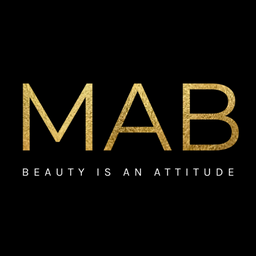Keep your clients healthy and safe and gain their confidence and repeat business!
We’ve covered hygiene pretty extensively in previous posts, so it only makes it appropriate that we cover tool sanitization methods.
So, why is sanitization important? Most beauty professionals know the answer to this, but it never hurts repeating. When your beauty tools are properly maintained and sanitized, it dramatically stifles bacteria and viruses that can lead to infections and illness — pertinent for both you and your client.
Want a sure fire way to set yourself apart from your competition? Implement sterilization and sanitation methods to keep a beauty sanctuary your clients can relax and enjoy! At My Absolute Beauty, health and safety of your clients are a priority which is why we have created online and in-class courses and products that always have them in mind. Heighten your sanitization basics in today’s post.
Sanitization Methods 101
If you already have a beauty business, you likely have a preferred sanitization method, but it never hurts to get a bigger, broader picture of your options out there — if only to assist your daily operations. Below we’ll break down different sanitization methods.
Besides sanitizing your tools to keep people safe, why else is it important?
Beauty tools are an investment so it is utterly important to keep them in tip-top shape so they last! Take pride in your tool collection and sanitize them often — in most cases — daily!
 The Fab Five Methods of Sterilization
The Fab Five Methods of Sterilization
Get familiar with these methods and choose a sterilization method that fits with the hustle and bustle of your business — it’s here to protect people and hopefully help save you time!
Dry heat.
One method in sanitizing your tools is through dry heat, which is essentially baking your tools with conduction. A specific time and temperature for dry is required and can take anywhere from two hours at 320 degrees, one hour at 340 degrees, and high-velocity machines six to 12 minutes at 375 degrees.
You can find various dry heat sterilizers online. These are great for stainless steel tools, and depending on the machine you get it can be a quick and simple process.
Moist heat.
With moist heat sterilization, you can accomplish proper sterilization by boiling tools at 212 degrees for some time or using a steam machine with an airtight chamber.
High-pressure sterilization is also the preferred method in the medical field and is performed in an autoclave. Pressure combined with lower heat (250 degrees) sterilizes heat-resistant tools in about 15 to 30 minutes. If you’re in a pinch, most of these machines have a flash sterilization setting, yet we recommend only to be use it in an emergency situation because it does sacrifice some safeguards.
UV light.
UV light effectively kills bacteria through ultraviolet wavelengths and is a great option for those trying to reduce their use of chemicals for disinfection. Medical facilities also employ UV light sanitization to create a sterile and safe environment for patients.
Fumigation and Vapors
This method of vapor sterilization uses a chemical solution — instead of water — to sanitize tools. It runs with a temperature of 270 degrees and a pressure of 25 psi for 20 minutes. With this method, there is no rusting and tools dry quickly for more immediate use.
Chemical agents.
You can find chemical agents such as an antiseptic or disinfectant within a container that tools can rapidly be disposed in to let soak. While submerged any bacteria or viruses are destroyed and the beauty professional can give the tools a quick rinse under water and let dry, and then the tools are ready to go to be used again.
Now that we have an understanding of the different sanitization methods, let’s cover some basic rules below.
- Wear clean clothes, uniforms, and aprons at all times.
- Clearly label all sanitizing stations or devices and keep them covered.
- Use clean, sterile towels on each and every client.
- Keep all of your tools in an optimal, clean condition.
- Have alcohol pads available during services to sanitize on the spot.
- Keep your workstation clear — free from other guests and animals.
- Always sanitize your station and tools between every client.
- Keep hand sanitizer nearby in case you have to answer the phone or go away from your station.
Sanitization is great for client care and boosting the longevity of your tools. Every beauty business will have a preference for the type of method they use, with the most popular being dry and moist heat, and chemical agents.
Each sanitization method has its own set of advantages and disadvantages. It’s important to choose one appropriate with your workflow.
Happy sanitizing!
We’re here to support beauty professional — to learn more about the premier products and innovative training we offer in-class and online, connect with us today!
The post Tool Sanitization Basics For Beauty Professionals appeared first on My Absolute Beauty.

